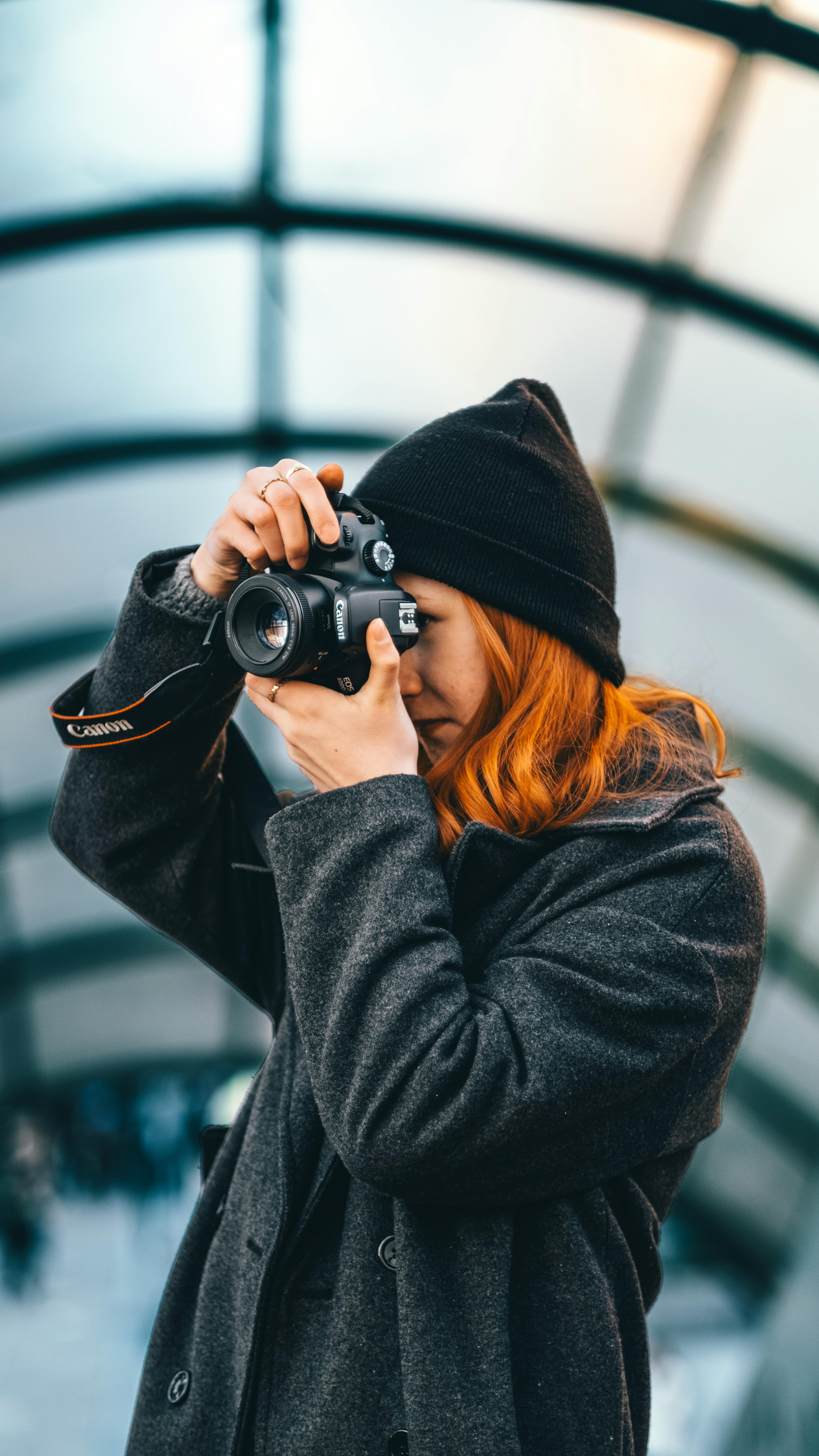If you’re an aerial photography enthusiast and wondering what types of cameras you can mount on an RC helicopter or quadcopter, you’ve come to the right place. From compact cameras to action cameras and even DSLRs, there are a wide variety of options available to capture breathtaking shots from high up in the sky. In this article, we’ll explore the different types of cameras that can be mounted on these remote-controlled flying machines, giving you the opportunity to elevate your photography game to new heights. So, get ready to discover the perfect camera for your next aerial adventure!

Types of Cameras
Action Cameras
Action cameras are small, compact, and lightweight cameras that are designed for capturing fast-paced and adventurous activities. These cameras are perfect for recording your thrilling experiences and capturing the action from a unique perspective. They usually come with a wide-angle lens, allowing you to capture a wider field of view. Action cameras are also designed to be waterproof and rugged, ensuring that they can withstand extreme weather conditions and rough handling. Additionally, action cameras offer various mounting options, allowing you to attach them to your RC helicopter or quadcopter easily. Whether you’re into extreme sports or simply want to document your everyday adventures, action cameras are a versatile and reliable choice.
Mirrorless Cameras
Mirrorless cameras are becoming increasingly popular in the world of photography. They are smaller and lighter than traditional DSLR cameras but still offer excellent image quality and advanced features. One of the main advantages of mirrorless cameras is their ability to interchange lenses, which allows you to have more versatility and control over your photographic experience. Additionally, mirrorless cameras often come with advanced features, such as the ability to shoot in RAW format, which provides greater flexibility in post-processing. However, it’s important to note that mirrorless cameras may require additional stabilization, especially when mounted on an RC helicopter or quadcopter, to ensure smooth and steady footage.
Compact Cameras
Compact cameras, also known as point-and-shoot cameras, are small, portable, and easy to use. They often come with a fixed lens, meaning that you cannot interchange lenses like you can with mirrorless or DSLR cameras. Compact cameras are designed for convenience and simplicity, making them perfect for casual photographers or individuals who want a camera that can easily fit in their pocket. While compact cameras may not offer the same image quality or manual controls as other camera types, they can still capture great photos in various conditions with their automatic settings. If you prioritize portability and ease of use, a compact camera may be the best choice for your RC helicopter or quadcopter.
DSLR Cameras
DSLR cameras, or digital single-lens reflex cameras, are known for their superior image quality, manual controls, and versatility. These cameras are popular among professional photographers and enthusiasts who value image quality and creative control. With DSLR cameras, you can easily swap lenses to adapt to different shooting situations, giving you endless possibilities in capturing the perfect shot. However, it’s important to note that DSLR cameras tend to be larger and bulkier than other camera types, which can affect the stability of your RC helicopter or quadcopter. Using additional stabilization equipment, such as gimbals or camera mounts, may be necessary to ensure smooth footage when mounting a DSLR camera.
Thermal Cameras
Thermal cameras, also known as infrared cameras, are specialized devices that detect heat and temperature differences. These cameras are primarily used for surveillance, thermography, or thermal mapping purposes. When mounted on an RC helicopter or quadcopter, thermal cameras can provide a unique perspective by capturing thermal images from above. This can be particularly useful for identifying heat sources or detecting anomalies in a specific area. However, it’s important to keep in mind that thermal cameras generally have limited image resolution and color accuracy compared to traditional cameras. If you have specific applications that require heat detection, then a thermal camera may be a valuable addition to your RC aerial photography setup.
360-Degree Cameras
360-degree cameras, also known as omnidirectional cameras, are designed to capture a full 360-degree panoramic view of your surroundings. These cameras are perfect for creating immersive virtual reality experiences or capturing unique perspectives. When mounted on an RC helicopter or quadcopter, 360-degree cameras can provide a bird’s-eye view of your surroundings, allowing you to explore and document your environment in a whole new way. However, it’s important to note that 360-degree cameras may have limited image quality compared to traditional cameras. If you prioritize the ability to capture the entire scene in a single shot and want to experiment with virtual reality content, a 360-degree camera could be a great option for your RC aerial photography setup.
Zoom Cameras
Zoom cameras, as the name suggests, are known for their high optical zoom capabilities. These cameras are perfect for capturing distant subjects or getting closer to the action without physically being there. When mounted on an RC helicopter or quadcopter, zoom cameras allow you to capture detailed shots from afar, providing a unique perspective that would be difficult to achieve with other camera types. However, it’s important to keep in mind that zoom cameras can be heavy and may require additional stabilization to ensure steady footage. If you often find yourself needing to capture distant subjects or want the flexibility to zoom in and out, a zoom camera could be a valuable addition to your RC aerial photography setup.
Micro Cameras
Micro cameras are incredibly small and lightweight cameras that are perfect for capturing shots in tight spaces or areas with limited accessibility. These cameras are often used for industrial or scientific purposes, but they can also be utilized in RC aerial photography. When mounted on an RC helicopter or quadcopter, micro cameras can provide a unique perspective and allow you to capture shots that would be impossible to achieve with larger cameras. While micro cameras may not offer the same image quality or advanced features as other camera types, they are a practical choice when size and weight limitations are a concern.
Gimbal Cameras
Gimbal cameras combine the functionality of a camera with a built-in gimbal, which is a device that helps stabilize the camera and reduce unwanted camera movements. These cameras are specifically designed for capturing smooth and steady footage, making them an excellent choice for aerial photography and videography. The built-in gimbal allows the camera to compensate for the vibrations and movements caused by the RC helicopter or quadcopter, resulting in professional-looking footage. Gimbal cameras often come with advanced features such as auto-tracking, follow-me mode, and various shooting modes, providing you with even more creative options when capturing aerial footage.
FPV Cameras
FPV, or first-person view, cameras are specifically designed for providing an immersive flying experience. These cameras are commonly used in the world of drone racing, but they can also be utilized for aerial photography purposes. FPV cameras offer a low-latency live video feed, allowing you to see what your RC helicopter or quadcopter sees in real-time. While FPV cameras may not offer the same image quality as other camera types, they provide a thrilling and immersive perspective that can enhance your flying experience. If you value the excitement of flying and want a real-time view of your aerial adventures, an FPV camera could be a fantastic addition to your RC aerial photography setup.

Factors to Consider
Weight and Size
When choosing a camera to mount on your RC helicopter or quadcopter, weight and size are crucial factors to consider. The weight of the camera can affect the overall balance and stability of your aircraft, and a significantly heavy camera may strain the motors or limit the flight time. Additionally, the size of the camera should be compatible with the mounting options available on your RC aircraft. It’s important to find a camera that strikes a balance between functionality and weight to ensure optimal performance.
Image Quality
The image quality of a camera is a significant consideration when it comes to aerial photography. Higher image quality allows for more detailed and vibrant photos or videos. Factors that contribute to image quality include the size of the camera sensor, megapixel count, dynamic range, and low-light performance. Depending on your needs and expectations, you may prioritize image quality over other features when selecting a camera for your RC aerial photography setup.
Stabilization
Stabilization is crucial when capturing aerial footage, as any vibrations or movements can result in shaky or blurry images. Some cameras come with built-in stabilization, such as gimbals or electronic image stabilization, to compensate for the movements caused by the RC helicopter or quadcopter. If the camera does not have built-in stabilization, it’s important to invest in additional stabilization equipment, such as gimbals or camera mounts, to ensure smooth and steady footage during flight.
Mounting Options
Different camera types offer various mounting options, and it’s essential to consider the compatibility of the camera with your RC aircraft. Some cameras come with dedicated mounting brackets or accessories, while others may require additional adaptors or custom mounting solutions. It’s crucial to ensure that the camera can be securely attached to your RC helicopter or quadcopter and that any vibrations from the aircraft are minimized to avoid affecting the footage quality.
Remote Control and Live View
Having remote control and live view capabilities can greatly enhance your aerial photography experience. Some cameras offer built-in Wi-Fi or Bluetooth connectivity, allowing you to remotely control the camera settings or view the live feed from your smartphone or tablet. This feature enables you to adjust camera parameters, such as exposure or focus, without needing physical access to the camera. It’s important to consider whether these remote control and live view features are essential to your aerial photography workflow when selecting a camera for your RC aircraft.
Battery Life
Battery life is a practical consideration, as it determines how long you can record or capture images during a single flight session. It’s important to choose a camera with sufficient battery life to meet your specific needs. Additionally, depending on the camera model, it’s crucial to consider the availability of spare batteries and their cost. This ensures that you can have an uninterrupted aerial photography experience by quickly swapping out drained batteries with fully charged ones.
Price
Price is always an important factor to consider when purchasing a camera. Different camera types and models come with varying price ranges, depending on their features, image quality, and brand. It’s essential to set a budget and consider the trade-offs between price and the features and capabilities that you prioritize. While it may be tempting to opt for the most expensive camera with all the latest features, it’s important to find a balance between your budget and the functionalities that will enhance your RC aerial photography experience.
In conclusion, when choosing a camera to mount on your RC helicopter or quadcopter, it’s important to consider a variety of factors. The type of camera you choose will depend on your specific needs and priorities, such as image quality, size, weight, and the desired perspective. Whether you opt for an action camera for capturing adventurous activities, a mirrorless camera for versatile photography, or a specialized thermal camera for heat detection, there are numerous options available to suit your RC aerial photography needs. By considering the factors outlined in this article, you can make an informed decision and select the perfect camera for your RC aerial adventures.



